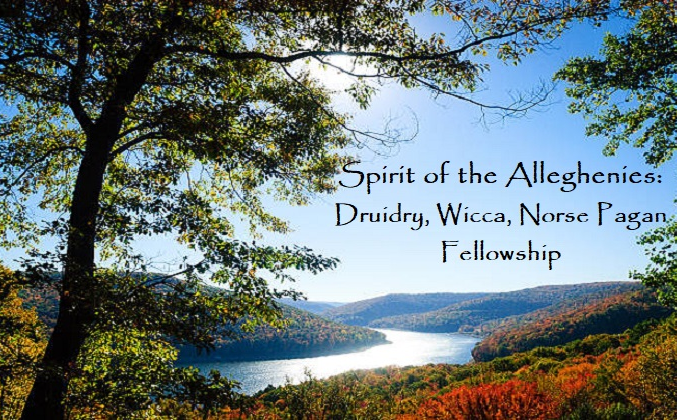White Cedar
The needles of the White Cedar (also called Arbor Vitae) may be dried and burned as an incense to purify an area from negative thoughts and energies, and to call in protector spirits, especially the spirits of one’s ancestors. The technique is known as smudging and involves wafting of the smoke about oneself and the…
Wintergreen
Wintergreen is easy to identify by the small, shiny, almost waxy oblong green leaves that come to a point where it connects to the stem (these leaves can also sometimes be purple). The underside of the leaves often has black speckles or dots. It sprawls out to form a woody groundcover. When you break apart…
Blue Vervain
Vervain (Verbena officinalis), also known as common vervain or common verbena, is a flowering perennial plant native to Europe, North America, and Asia. The plant is recognized by its jagged, tooth-shaped leaves and clusters of delicate, mauve or pale-purple blossoms. Rich in compounds known as flavonoids, vervain is a potent anti-inflammatory, antibacterial, antispasmodic, anti-depressant, anxiolytic,…
Chamomile
Used as an herbal remedy for thousands of years, Chamomile is used to treat an extensive list of ailments, including fever, headaches, kidney, liver, and bladder problems, digestive upset, muscle spasms, anxiety, insomnia, skin irritations, bruises, gout, ulcers, rheumatic pain, hay fever, inflammation, hemorrhoids, colic, and menstrual disorders. The generic name, Matricaria, comes from the Latin matrix,…
Scarlet Pimpernel
Scarlet pimpernel – Anagallis arvensis (syn. Lysimachia arvensis) also known as poor man’s barometer, poor man’s weather-glass, shepherd’s weather glass or shepherd’s clock. It gets these weather related names from the fact that its flowers open only when the sun shines, and close in cloudy conditions. In folklore it’s know as a plant that when…
Mint
There are over 600 kinds of mint worldwide. The tell-tale way of determining whether a plant is in the mint family is by the smell of the torn leaves. Mints have square stems, oblong leaves that taper to a narrow tip, with toothed edges. They vary from dark green to light green.” With its invigorating…
Common Mullein
Common mullein, also known as “Lamb’s Ear,” is a biennial herbaceous plant native to Europe, Asia, and North Africa. It has since naturalized in various regions of North America and is now commonly found along roadsides, railroad tracks, and in meadows and neglected fields. The plant is characterized by its large, broad leaves covered in…
Bearberry
Bearberry (Arctostaphylos uva-ursi) is a low-lying shrub that grows predominantly in soils composed of sand, gravel, or dunes in boreal forests. When smoked in a pipe, or when steeped as tea, bearberry leaves have a calming effect on the nervous system and are used to cure anxiety, migraine headaches, and general pain. Smoking is the…
Red Willow
Red Willow, also known as Red-Osier Dogwood, is a medium deciduous shrub with red branches and twigs. One of the primary traditional uses of Red Willow lies in its analgesic properties. The bark of Red Willow contains salicin, a natural compound akin to aspirin, which serves as a potent pain reliever. Indigenous communities use Red…
Tobacco
One of the Four Sacred Herbs of the Anishinabe Ojibwe, Tobacco is used to communicate with the Spirit World and to show respect to elders, teachers, and community leaders. When the leaves are dried and smoked in the ceremonial pipe, the smoke carries our prayers and intentions through the Hole in the Day to the…
Sweetgrass
Sweetgrass (Hierochloe odorata) is a very hardy perennial, able to grow in the Arctic Circle. The base of the leaf, just below the soil surface, is broad and white, without hairs; the underside of the leaf is shiny and glabrous. One of the Four Sacred Herbs of the Anishinabe Ojibway, Sweetgrass is revered by many…
White Sage
One of the Four Sacred Herbs of the Anishinabe Ojibway, indigenous tribes across North America use White Sage ceremonially and as a medicinal plant. The aromatic smoke of White Sage is believed to carry prayers and intentions to the heavens, invoking spiritual guidance and protection for oneself and the community. The leaves are dried and…
Kinnickinnick
Kinnickinnick is a blend of various dried herbs, barks, and leaves, each carefully selected for its aromatic qualities, medicinal properties, and symbolic significance. Traditionally, common ingredients include dried tobacco leaves, bearberry (also known as uva-ursi), red willow bark, and sometimes additional herbs such as mint, mullein, or sage. The specific ingredients used may vary depending…
